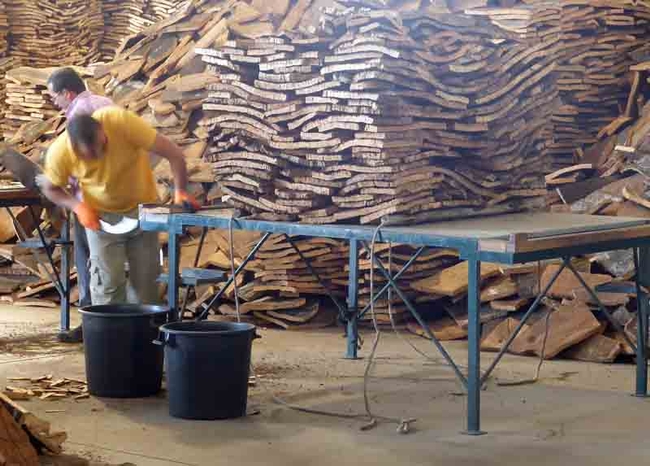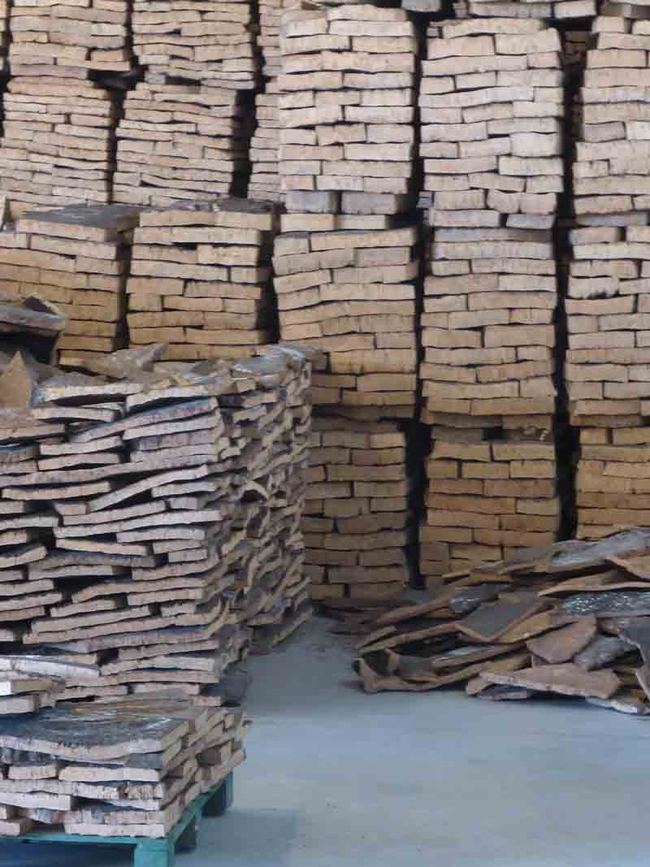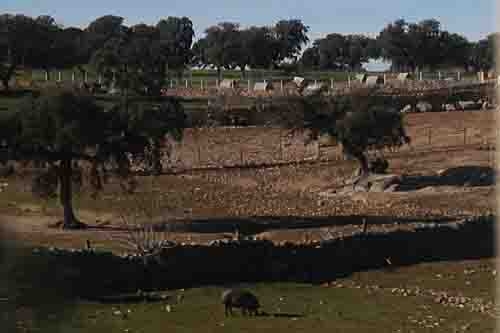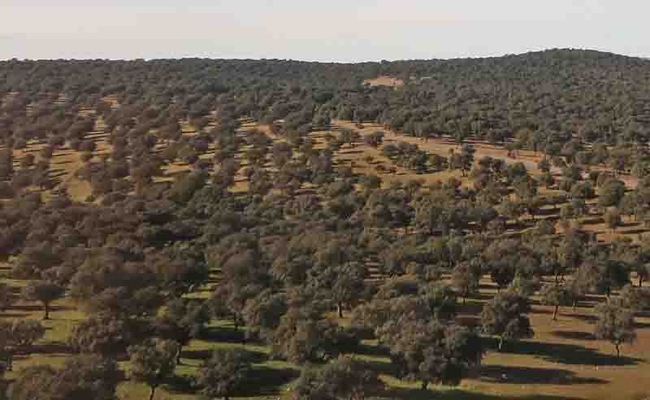Why are wine bottles tall and narrow? That distinctive shape contributes to the happy marriage between cork and a bottle made tall enough to lie on its side so the wine can “breathe” through the cork as it matures. Lying on its side while stored in cool, dry cellars ensures that the liquid within the bottle will marinate the cork end just enough to keep it from drying out and crumbling.

What do wine, wax, and wrinkles have to do with local trees? In 1904, a cork oak grove was planted in Lower Bidwell Park near the Nature Center on East 8th Street. The grove was located within a 29-acre tract of land that John Bidwell donated in 1888 to the newly created State Board of Forestry for use as a woody plant nursery and demonstration plantation.
Cuttings and young plants were collected from all over the globe for the project, including species of willow, mulberry, linden, maple, oak, catalpa, pine, and eucalyptus. The ensuing planting spree in the 1890s included Sequoia gigantica, a tract of Italian cypress (these trees gave rise to the name “Cedar” Grove), and a large plot of Scots pine. Of those late-19th century conifer plantings, only the cypress remain: the Sequoia were decimated by a freak freeze in 1932, and bark beetles took all but a few of the pines.

The species can reach about 66 feet in height, but is usually smaller than that in its native habitat. There are two notable exceptions: In Portugal, the Sobreiro Monumental (Monumental Cork Oak), is 234 years old and 52 feet tall, with a trunk so large in circumference that it takes up to five people with outstretched arms to encircle it. It is listed as a National Monument, and cited in the Guinness Book of Records as the largest and oldest cork oak in the world. Closer to home, a Quercus suber in Napa is registered as a California Big Tree. It is 89 feet tall, with a trunk circumference of 20 feet, and a crown spread of 81 feet.
The acorns of the cork oak have a distinctive fringed cap, smooth chestnut skin, and characteristic green mark at the bottom, and the tree's shiny, deep green, loosely-lobed leaves are attractive. But its bark is the cork oak's claim to fame. Almost ghostly pale in color, the bark is deeply furrowed and springy, and provides an ecologically sustainable cash crop. The thick, insulating bark also makes it possible for the tree to survive fires, after which it regrows branches to fill out the canopy.

Modern uses aside, the method of harvesting the bark from the cork oak dates back to the Middle Ages, using an axe that has barely changed in all that time. Virgin (or “male”) cork is cut for the first time from trees about 25 years old. After that, the bark is harvested every 9 to 12 years. Trees can live over 200 years, and one harvest of bark from a single tree can produce enough to cork 4,000 bottles.
In the harvesting process, the bark is peeled from the tree by hand, using only an axe to strip the bark from around the tree. Absolutely no machinery is employed. It can take up to five people to harvest the bark of each tree. Because expertise and finesse is required to peel off the bark without damaging the trunk's cambium layer, harvesters train for about 8 years.
Our cork oaks in Lower Bidwell park were also harvested periodically; scars from a stripping performed in 1940 and again more recently are visible even now.

In addition to providing cork bark, cork oak groves in Portugal and Spain support another form of agriculture: their acorns provide sustenance to sheep, cattle, and especially hogs. A superior type of ham with a distinctive sought-after flavor is obtained from the Iberian pigs that feed on the fallen acorns.
Our local cork grove in Lower Bidwell Park provides a window into the past by hearkening back to the ancient farming traditions of the Mediterranean countries, and is a living legacy to John Bidwell's quest to, as local naturalist Rex Burress elegantly stated, grow plants “far from their native origins but brought together to mingle in a new habitat.” Best of all, in my opinion, is our cork oak grove's genetic bond to those trees that make a crucial contribution to good wine.
UC Master Gardeners of Butte County are part of the University of California Cooperative Extension (UCCE) system. To learn more about us and our upcoming events, and for help with gardening in our area visit our website. If you have a gardening question or problem, email the Hotline at mgbutte@ucanr.edu or leave a phone message on our Hotline at 530-552-5812. To speak to a Master Gardener about a gardening issue, or to drop by the MG office during Hotline hours, see the most current information on our Ask Us section of our website.